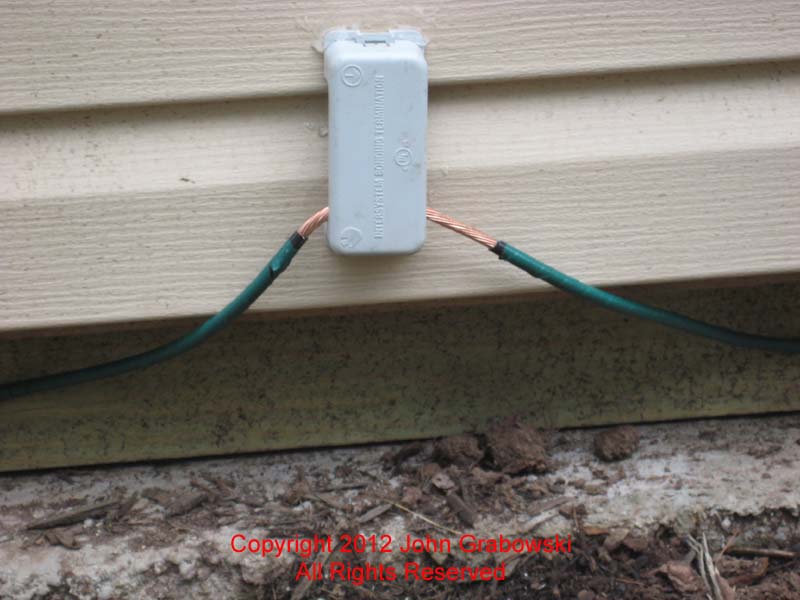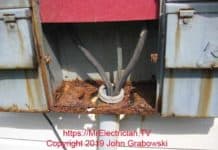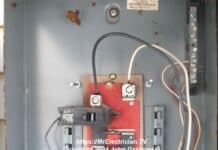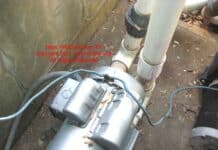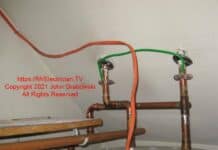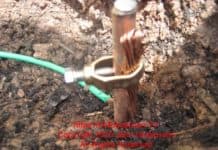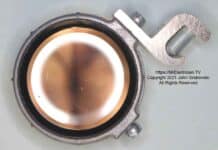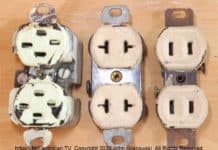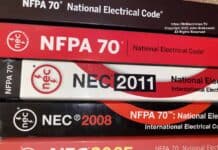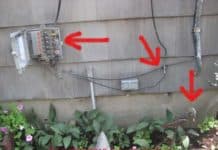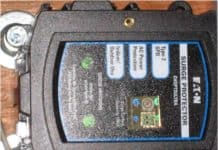Dear Mr. Electrician: What is an intersystem bonding termination used for?
Answer: An intersystem bonding termination is part of your grounding electrode system to help prevent damage to your home from lightning.
NOTE: Some text links below go to applicable products on Amazon and eBay. As an Amazon Associate, I earn from qualifying purchases. Using my links helps to keep this website FREE.
LIGHTNING PROTECTION USING AN INTERSYSTEM BONDING TERMINATION
A home lightning protection system consists of several components. Good earth grounding through ground rods and water pipes is the most important.
Additional home lightning protection components are surge protectors on your main electrical panel, plug-in surge protectors or surge protection outlets around your home, lightning arrestors on top of your roof, and an intersystem bonding termination for other utilities to connect their grounding conductors.
Lightning damage may not come from a direct hit to your home but from lightning hitting your cable TV or telephone line at the utility power pole in the street. A satellite dish or roof antenna is also susceptible to a direct lightning hit.
Therefore, all utilities in your home must be grounded to the earth. The intersystem bonding termination makes it easy for utilities to connect to earth ground.
PROTECTING HOME UTILITIES FROM LIGHTNING
An intersystem bonding termination connects all utilities to the earth’s ground. Several versions of this are available, but they all work the same. The intersystem bonding termination connects the grounding electrode conductor to the ground rod.
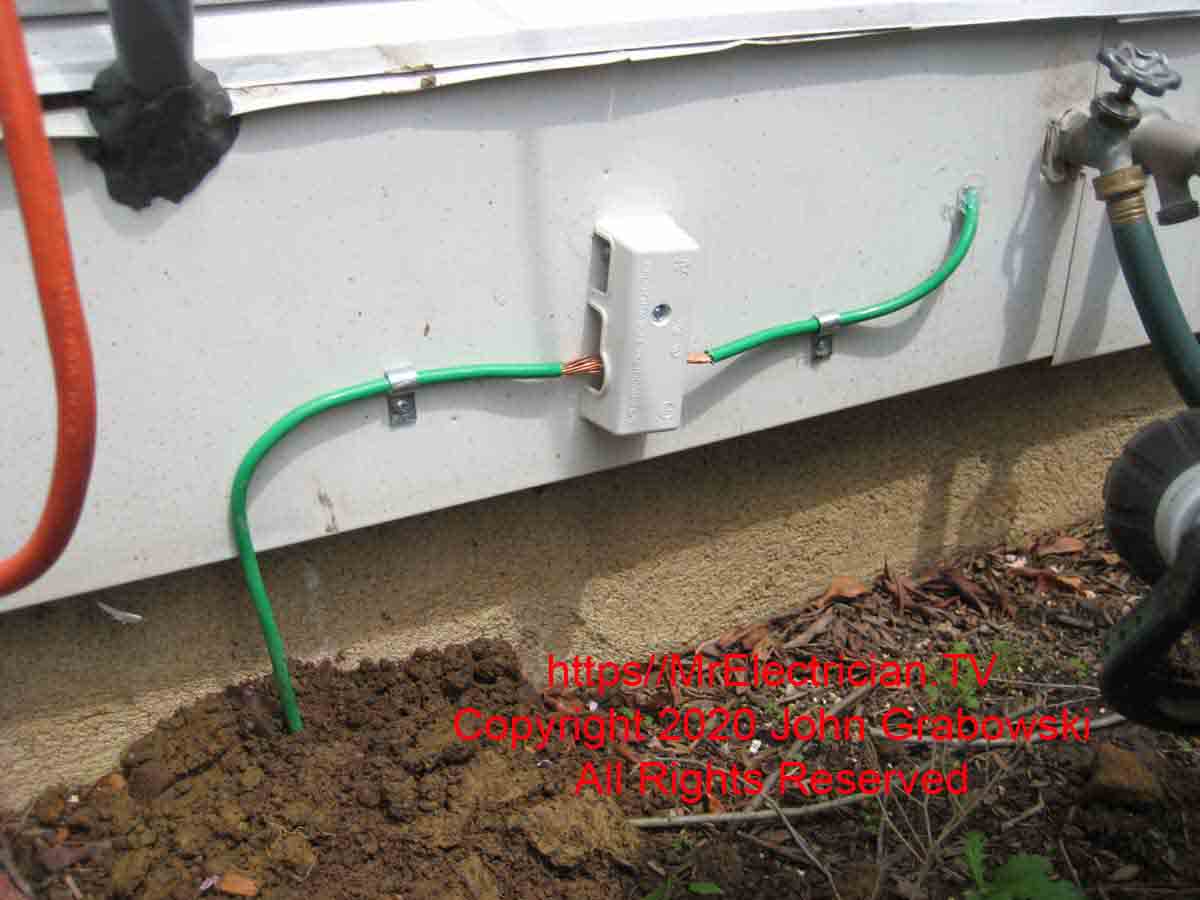
Utility companies such as telephone and TV will connect their grounding conductor for their equipment to be earth grounded. In the past, utility companies used a wire clamp to connect to the grounding electrode conductor wherever possible.
With all things connected to Earth’s ground, if lightning were to strike the outside cable TV wire, the lightning energy would be channeled directly to Earth.
With a weak or non-existent earth-ground connection, the lightning will find a way to earth, but that could be a path through your TV, computer, major appliance, or even the metal ducts in your house. That is how things get damaged and fires start.
See my article with photos of one example of TV and Telephone bonding and grounding in an older house.
I got a call to check out why a garage door opener in a new house got hit by lightning. The outlet for the garage door had a functional ground connection. I looked in the basement at the twin electrical panels, and the ground connections looked good.
I checked the water pipe connection and saw that water was coming from a well. The pipe from the well to the house was plastic and converted to copper once inside. Lastly, I looked for a ground rod and found it. The wire on the ground clamp was attached wrong, and the clamp was loose.
I surmised that due to the poor existing ground connection at the ground rod, the lightning found a good ground path through the garage door rails down to the garage concrete floor, which is a good earth ground. In the process, the garage door opener got in the way.
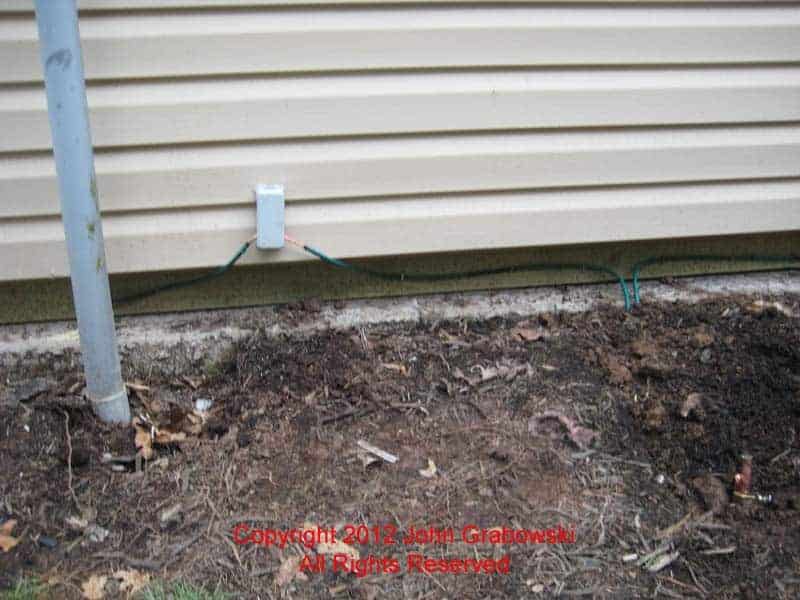
The photo above depicts one type of Intersystem Bonding Termination that the National Electrical Code requires. This simple terminal block makes it easy for telephone and cable TV installers to connect their grounding electrode conductor wire to a good earth-ground connection.
It connects one large grounding electrode conductor and up to four smaller grounding conductors for cable TV, satellite dish, and telephone services. It is essential to have this for lightning protection.
The Intersystem Bonding Termination is required per article 250.94 in the National Electrical Code. You should also read NFPA 780 on lightning protection.
If you install lightning arrestors on your roof, they must be connected to one or more ground rods separately from the ground rods for your power system. However, all ground rods still need to be bonded together.
Many years ago, some dear friends moved out of state. I went to visit them and fell in love with their hot tub. On my next visit, they told me about lightning killing their VCR. At the time, I did not think much of it. The next time I visited, they said lightning disabled the hot tub. Now, I was motivated to look into the problem.
The house was over a hundred years old, and the plumbing and electrical were not up to good standards. Looking around in the basement, I searched for the grounding electrode connection. I found a galvanized pipe in the basement wall with the grounding electrode conductor wrapped around it. It was a terrible earth-ground connection and the reason why lightning caused damage to their home.
We purchased a ground rod and clamps and drove the rod 7′ 10″ horizontally through a small gap in the basement stone foundation. Using an acorn-style ground rod clamp, I connected a #6 copper wire to the main electrical panel neutral bar and the ground rod. I made tight connections and ensured all plumbing and utilities were bonded. They never had a problem with lightning again.
This was done before the National Electrical Code required a common connection point like the intersystem bonding termination. Before that, telephone and cable TV companies would clamp their equipment grounding conductor onto the grounding electrode conductor or drive their own ground rod into the earth.
Adding a whole house surge protector to your lightning protection system will provide more protection against lightning and power surges. Some surge protectors can protect against additional electrical system threats such as solar flares and an electromagnetic pulse (EMP).
Click here to see all of my blog posts concerning lightning protection.
To help keep this website FREE, please use this Amazon link for your purchases. As an Amazon Associate, I earn from qualifying purchases.
Click for a FREE copy of my book “Almost Everything You Need To Know To Repair a Bathroom Exhaust Fan In Your Home.”
Get your required “Emergency Disconnect, Service Disconnect” labels and stickers to satisfy the 2023 National Electrical Code requirements in article 230.85(E)(1) and (2) by going to my Redbubble Shop here.
Visit my Link Tree home page for my social media connections and other links.
